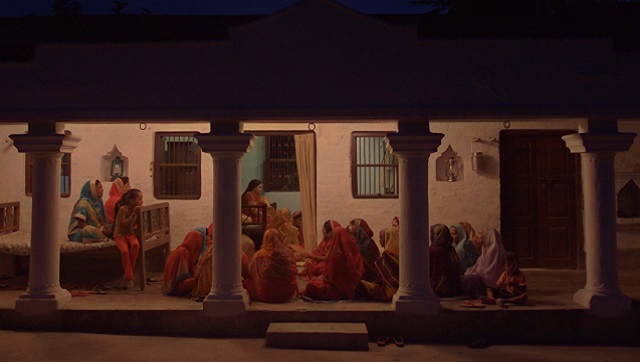Movies and shows, old and new, have helped us to live vicariously through them. They have allowed us to travel far and wide at a time borders are shut and people are restricted to homes. In our new column What’s In A Setting, we explore the inseparable association of a story with its setting, how the location complements the narrative, and how these cultural windows to the world have helped broaden our imagination. * I never had a home in a village or a village to identify as home. In our postal address, we wrote village - Santragachi (where I grew up), but Santragachi was hardly a village. We lived in close proximity to Kolkata where we went very often to meet friends and relatives, go shopping, eating or watching a film. Santragachi was nothing like the village that I had seen in films or read in literature or hear my friends talk while discussing their village sojourns where they would regularly disappear during long school holidays. These villages were scattered all over West Bengal and some in the neighbouring states of Odisha and Bihar. From their stories, I borrowed snippets and conjured a village in my imagination. This village, however, only comprised shades of pristine and serene based on the tales I had heard. I pestered my parents to take me to a village. So they dragged me to homes of relatives in hinterlands of Midnapore or Murshidabad. Long family ties revived to placate their elder born. It often took us hours to arrive at our destination after a long train ride, followed by multiple bus and rickshaw adventures. The long journey added to the thrill of it all. Little did I then realise how arduous it must be for people living in these pockets to commute for work or education or why the benefits of development had long eluded these parts of the state and country. Recently, an artist-friend told me that she intends to move to the hills with her child, and create a community that her child could identify as her own. Cities are impersonal, she feels. Too big, distant, ephemeral. Almost chimeric in a way. I am tempted to not use the word ‘invisible’ in connection with the city now made famous by the writer Italo Calvino. My friend thinks that her child might eventually migrate to a city, seeking opportunities in education and employment but he will always have a place to return – the village. But would he really like to return? My friend does not know but she is happy that he will have a choice to exercise if he so wills. The village or the village home after all is just not a speck on the map, an accident in geography or a structure of concrete. It is metaphor, memory, and intimacy conjoined into one. Perhaps also a refuge and sanctuary of sorts. When I saw Achal Mishra’s ancestral home in the village of Madhopur (in Darbhanga district of Bihar) featured in his remarkable debut Maithili film, Gamak Ghar (2019), it felt like home – a real, lived-in space, and not a structure only constructed for the purposes of cinema, an intersection of fiction with the real. Various filmmakers have thought about and featured their homes in films. Pedro Almodovar recreated his home on screen for the wonderful Pain and Glory (2019). Chantal Akerman’s No Home Movie (2015) is akin to a home video documenting the story of her mother in their apartment in Belgium. Mexican avant-garde filmmaker Carlos Reygadas shot several of the family scenes at his own home in his much acclaimed film, Post Tenebras Lux (2012). One of Mishra’s major influences, Yasujiro Ozu, features the home in most intriguing ways in his films. Rohan Shivkumar and Avijit Mukul Kishore’s Lovely Villa (2019) unravels the story of a family experienced through the architecture of their home.
Mishra’s film pulled me into the lives that transpired within the four walls of the home – matter of fact, routine, mundane, lacking action in every way imaginable. Showing life in its ordinariness. Almost an anti-thesis to village life represented in Hindi cinema.
It did not seem for a moment that anyone on screen was acting. It helped to have people of the village appear in the film as themselves. The cast mostly involved non-actors, many of whom faced the camera for the first time in their lives. As the film shows, the occupants of the ghar have drifted away to urban centres seeking opportunities that the village lacks. They have built other homes in the cities or towns where they now live – Patna, Delhi, Darbhanga. The matriarch of the house lives in between homes – forever in transit, from one son to another. The village home is now visited only on special occasions. The visits are ritualistic, infrequent, and gradually cease altogether. Emotional chords loosened, the former occupants of the ghar have now grown roots elsewhere. The village home however waits patiently, forlorn, and neglected.


)
)
)
)
)
)
)
)
)



